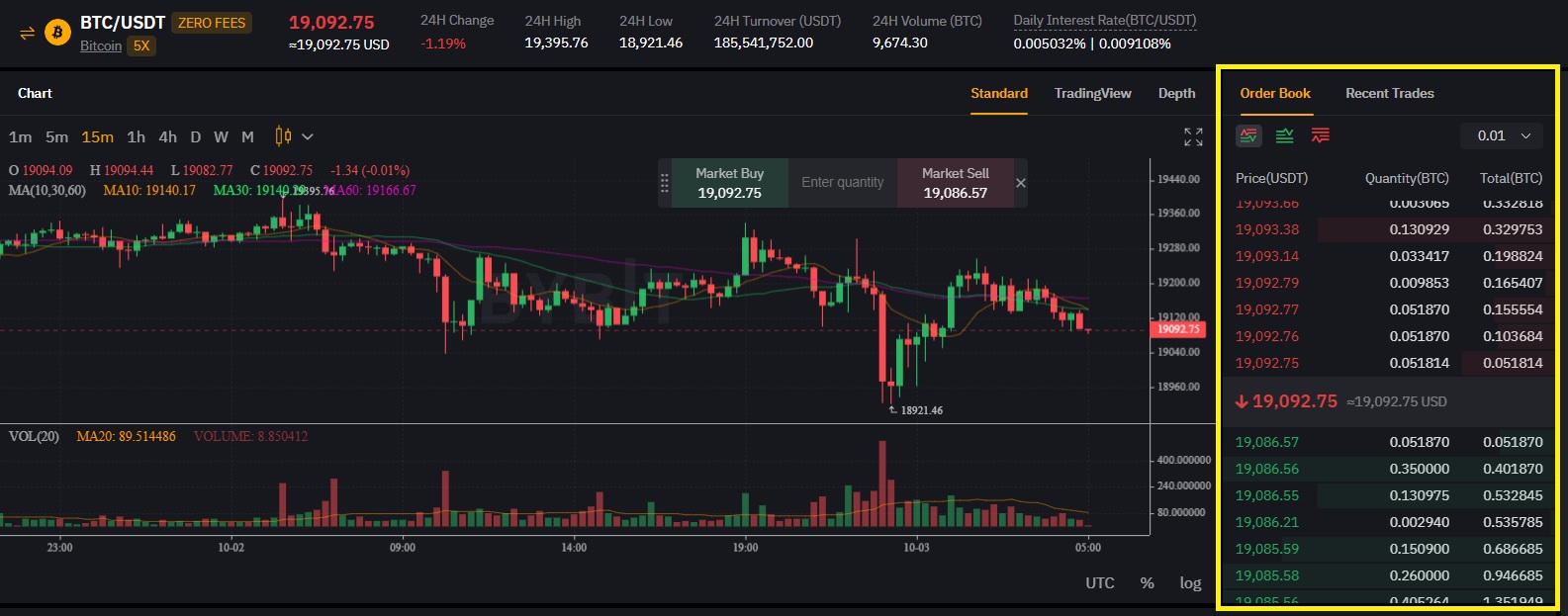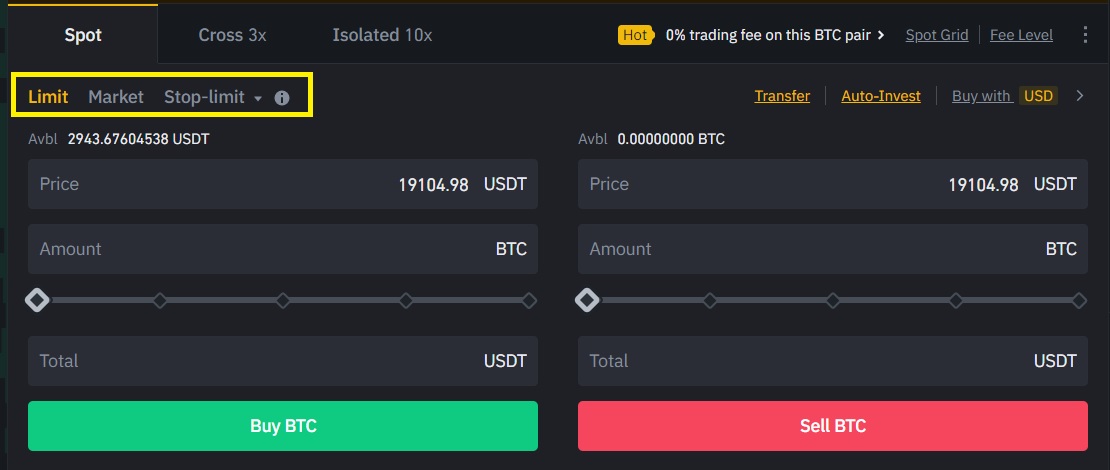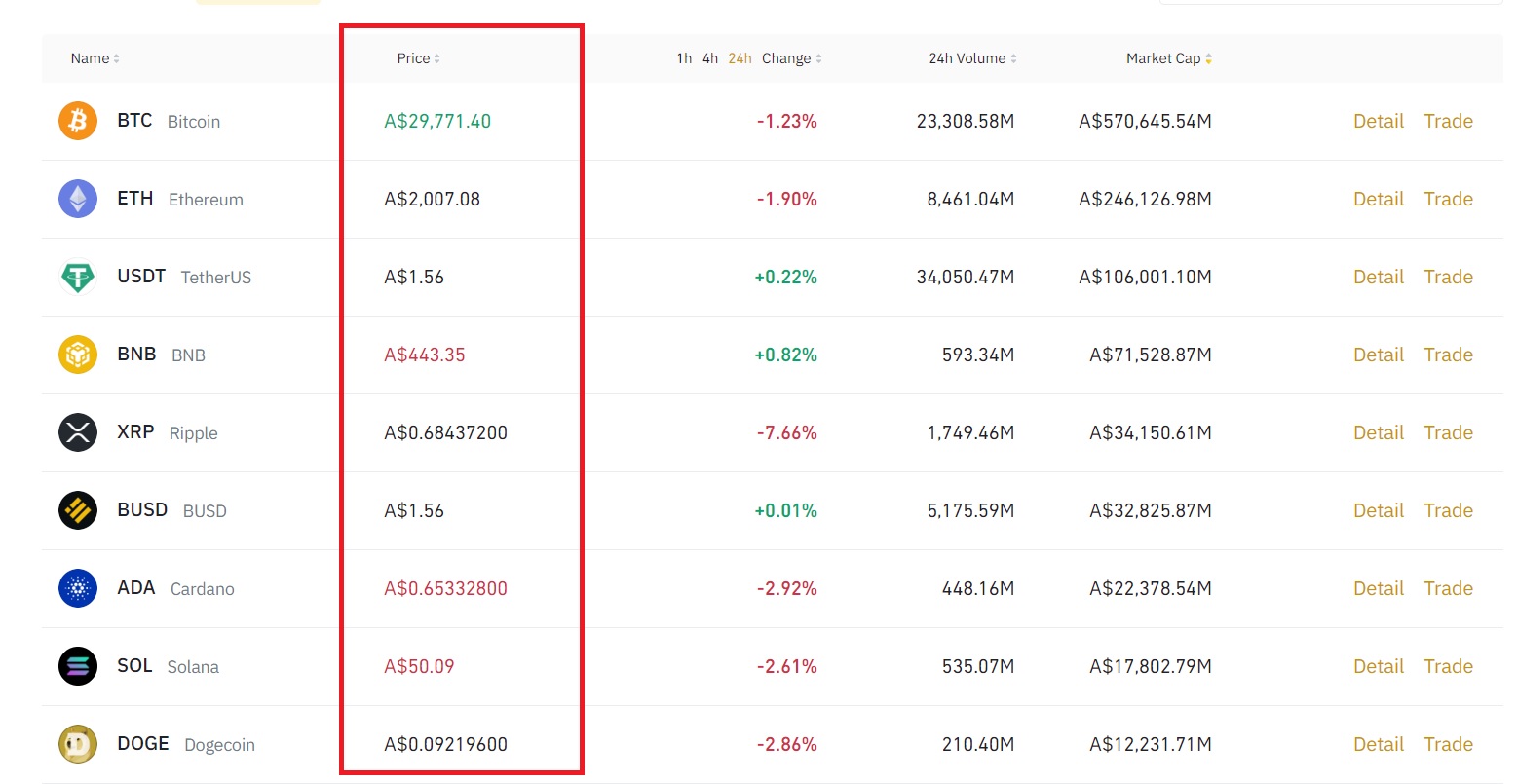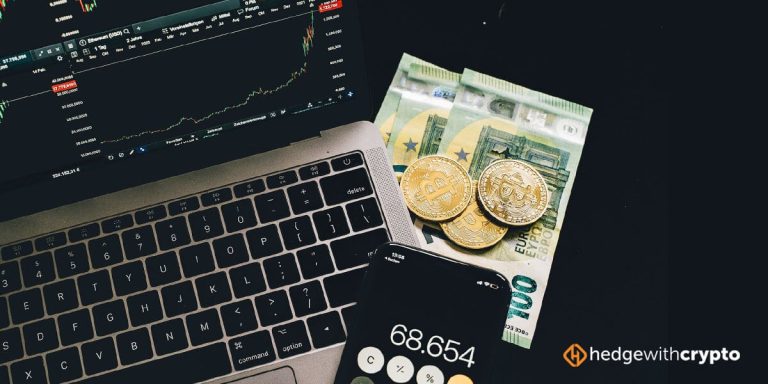How Do Crypto Exchanges Work & How They Make Money?
Key Points:
- Crypto exchanges and trading platforms allow individuals to buy and sell cryptos like Bitcoin and Ethereum
- The most common type is a centralized crypto exchange, which features an easy-to-use interface and supports multiple fiat currency payment methods
- Fees may be charged for deposits, withdrawals, and when performing trades
- Additional services such as margin trading, derivatives, and lending may be available on certain exchanges.
TABLE OF CONTENTS
What Is A Crypto Exchange?
Crypto exchanges are digital platforms that allow individuals to buy and sell cryptocurrencies. These platforms provide investors with the tools required to invest in cryptos such as Bitcoin, Ethereum, XRP, and other digital assets. The purpose of an exchange is to act as an intermediary between those investors looking to buy and those investors looking to sell. Investors can trade one crypto for another (a crypto-to-crypto exchange) or trade fiat currency for crypto (a fiat-to-crypto exchange).
Cryptocurrency exchanges are essentially a business that is designed to help investors buy and sell digital assets, the majority have now expanded to offer a vast range of additional services, such as derivatives trading, margin trading, crypto staking, and crypto cards. Thanks to the global reach and 24-hour nature of cryptos and blockchain, crypto exchanges can be used at any time by investors situated all around the world.
Ready to find a crypto exchange? Here is a list of the best cryptocurrency trading platforms.
Types of Cryptocurrency Exchanges
There are different types of cryptocurrency exchanges to choose from. The best-suited exchange depends on the user's level of experience in investing and trading financial markets. We have outlined the basic types below for each category of investor:
- Fiat-to-crypto exchange. First-time investors who are looking to make their first purchase in a digital coin will need to use a fiat-to-cryptocurrency exchange. These types of websites will accept multiple fiat currencies such as the USD, EUR, GBP, AUD, and NZD in exchange for digital assets such as Bitcoin and Ethereum.
- Crypto trading exchange. Once a purchase has been made, the crypto can be sent to a crypto-to-crypto exchange for trading cryptocurrencies. The most popular trading crypto exchanges in the US are Coinbase and Binance which are available around the world in several countries. These places offer charting features and tools such as technical indicators, drawing tools, and chart patterns that are ideal for crypto to analyze price action and identify trading opportunities.
- Margin and derivatives crypto exchanges. There are also cryptocurrency exchanges that offer futures and derivatives trading. These crypto exchanges require a thorough understanding of leverage trading and sound risk management principles are required. Crypto assets can be traded with leverage up to 100x.
- Call option platforms. A number of crypto exchanges allow individuals to trade crypto options. These are specific contracts between traders to buy or sell a particular asset at a predetermined (strike) price and on a specified date in the future.
- Crypto CFD and brokers. Online brokers provide an alternate way for investors to buy cryptocurrency and index funds. While CFD platforms do not offer the actual cryptocurrency assets to purchase, they allow traders to speculate on the direction of the price using margin in certain regions. This means investors can buy or short cryptocurrencies.
- Decentralized crypto exchanges. Commonly referred to as crypto DEXs, these platforms enable the buying and selling of crypto assets directly between buyers and sellers. There is no middle man involved and allows trading at a lower price point, with more payment methods and earning methods. However, they are traditionally more complex to use and not ideal for beginners.
- Peer-to-Peer crypto platforms. These websites allow buyers and sellers to exchange crypto without the intervention of a trusted third party. Other features of a P2P include rapid KYC, a wide selection of payment methods, and an escrow service for Bitcoin. For a list of the best crypto P2P platforms, read this comparison article.
How Do Crypto Exchanges Work?
A cryptocurrency exchange aims to match buyers with sellers. The buy and sell order is entered into a centralized order book which sorts orders by the intended buy or sell price. The exchange then uses a matching engine to match buyers and sellers and, therefore, complete the other side of all orders. The matching engine searches for the best executable price depending on the lot size requested.
What Is A Centralized Order Book?
An order book is a way to sort trades within a specific marketplace. For example, all those looking to trade Bitcoin compose a specific marketplace. The order book lists all trades that remain open in the marketplace. These are trades that are yet to be executed. Trades are then divided into a ‘buy side’ and ‘sell side’. Buyers get matched with the sell side of the marketplace, while sellers get matched with the buy side of the marketplace.

The order book of a crypto exchange can be viewed at all times. When viewing an order book, price is defined along the Y axis and the number of trades or units within each price bracket is along the X axis. Using the order book, the exchange’s matching engine must then sort through and match buyers and sellers with all of the different orders for the best possible exchange price.
What Is A Market Order & Limit Order?
Two main types of orders that can be placed on cryptocurrency exchange: (1) a market order or (2) a limit order. Market orders are completed instantaneously at the current exchange rate, also known as the spot price. This order is used when an investor wants to buy or sell an asset at all costs. When a market order is placed into an order book, the matching engine will immediately begin searching for the best possible exchange price based on all other open orders.

In comparison, limit orders allow investors to choose a preferred exchange rate. This provides investors with far more control. When a limit order is placed into an order book, the exchange will only begin executing the trade once the market price reaches the desired level. Although limit orders offer specificity, the downside is that there is no guarantee of order execution. Price may never reach the desired level.
A Crypto Exchange Order Example
Let’s imagine that 2 investors looking to buy Bitcoin as an investment. The price of 1 BTC is currently $20,600. Investor A wishes to purchase 1 BTC using a market order, while investor B thinks that the price of BTC is going to drop and, therefore, enter a limit order to buy 1 BTC at $20,000. Both orders are executed at the same time and placed into the order book of the crypto exchange.
The exchange’s matching engine starts to execute Investor A’s market order immediately. However, at the current exchange price of $20,600, there is not one seller that can fulfill the entire 1 BTC order. Therefore, the matching engine begins to look for the next closest seller that could help to complete the order.
The final exchange price ends up being an average of all orders involved. Investor A purchases 1 BTC for an average buy price of $20,620. They get BTC instantly, which is what they wanted but suffered a small change in the exchange price as a consequence. The slight price change is known as crypto slippage, which can be common with market orders.
Meanwhile, Investor B’s limit order is entered into the order book and instructs the exchange to execute the order once the price of BTC reaches $20,000. Fortunately for Investor B, a few hours later, the price of BTC falls to $20,000 and the exchanges begin matching sellers that are willing to sell at that price.
Related: How to sell Bitcoin and cash out.
How Do Cryptocurrency Exchanges Set Prices?
At any moment in time, the price of a cryptocurrency on an exchange is usually described as the spot price or market price. This is the price that a cryptocurrency can be purchased or sold for instantly. However, cryptocurrency exchanges do not determine the spot or market price of a cryptocurrency. The value of a cryptocurrency is determined by the underlying market, which is composed of investors looking to buy and sell.
The exchange is just a platform that gathers this information and then displays it to investors. If more investors are looking to buy rather than sell a cryptocurrency the price of that cryptocurrency will increase. On the other hand, if more are investors looking to sell rather than buy, the price of that cryptocurrency will fall.

As each crypto exchange has a different market of buyers and sellers, there are often very small discrepancies between different exchange prices. The higher the trading volume of an exchange (liquidity), the more accurate and reliable exchange rates will be. Although there can be discrepancies between different crypto exchange prices, these discrepancies quickly disappear due to arbitrage traders. If a specific cryptocurrency can be purchased for cheaper on one exchange and then sold for more on another, an arbitrage trader can take advantage of this difference. It is this process that keeps prices stable across all exchange platforms.
Related: What is crypto arbitrage and how does it work?
How Do Crypto Exchanges Make Money?
Cryptocurrency exchanges are profit-making organizations that need to make money to cover overheads and return a profit to shareholders. In short, crypto exchanges generate revenue through a variety of different means including commission fees, interest, listing fees, complimentary products and services, and market making. Each exchange is built to meet different objectives and the business model to generate profit can vary greatly.
A summary of the various ways crypto exchanges can make money is listed below:
- Commission trading fees. Commission trading fees are one of the most popular ways for crypto exchanges to make money. Every time that a trade is executed, the crypto exchange takes a small cut. This is a fee paid for the service that the exchange is providing. Commission trading fees can be as small as 0.1% per trade but can also increase beyond 1% on some platforms. The fee can also vary depending on the type of order placed. That is, using a limit or market order. To learn more, read our article on what are maker and taker fees in crypto.
- Market making. If there are not enough participants within a particular marketplace, an exchange can fulfill the position of “market maker” and supply extra liquidity. This means that the exchange will fulfill the other side of the trade and then try to sell those assets. However, fulfilling the other side of trades requires the exchange to take on a small risk which is negated by offering investors slightly different exchange rates. Buyers are offered a slightly higher exchange rate, while sellers are offered a slightly lower exchange rate. The difference is then banked as profit.
- Interest. In addition to trading fees, crypto exchanges can make extra revenue from lending capital to those interested in trading with a margin. Margin trading allows traders to borrow funds so that large position sizes can be entered with small upfront capital. However, interest must be paid on the amount borrowed. If a trader loses and positions are liquidated, liquidation fees are also often requested.
- Listing fees. The crypto exchange market is extremely saturated. As a result, many crypto exchanges require alternative methods of generating revenue. One of these alternative methods involves charging up-and-coming crypto projects with listing fees. For projects that would like to get a cryptocurrency listed on an exchange, some exchanges can request a percentage of all funds raised or charge a one-off payment. In return, an exchange can organize Initial Coin Offerings (ICOs) or Initial Exchange Offerings (IEOs) that can help boost the marketing of associated crypto.
- Complimentary products and services. As the crypto industry has become more popular, the list of products and services offered by crypto exchanges has grown. Features such as Visa or Mastercard crypto cards allow exchanges to earn a percentage from users spending cryptocurrencies at merchants worldwide. Several exchanges now also offer professional digital asset custody services for those wishing to store large volumes.
Frequently Asked Questions
How do exchanges calculate crypto price?
The price of a cryptocurrency is determined by supply, demand, and the fair market value that market participants are willing to pay. An exchange collects all buy and sell orders within a centralized order book and uses a matching engine to determine the current market price.
Is it safe to hold crypto on exchanges?
It is always best to hold cryptocurrencies within a personal crypto wallet. Each wallet is secured by private keys, which provide authority for individuals to move crypto assets. Personal crypto wallets allow individuals to control private keys, while exchange-based wallets require users to entrust private keys to the exchange platform. For convenience, keeping a small percentage of a portfolio on an exchange is okay, but crypto assets are always far more secure within a physical hardware wallet.
Are there other ways to trade besides a crypto exchange?
There are several other platforms that allow individuals to trade cryptocurrencies besides centralized exchanges. Alternatives include peer-to-peer (P2P) trading platforms, brokerages, and decentralized exchanges.




